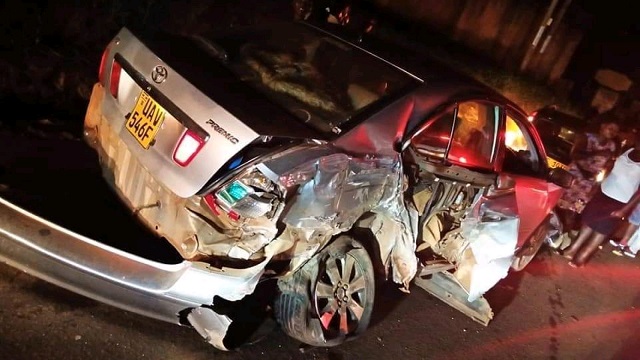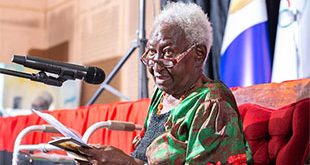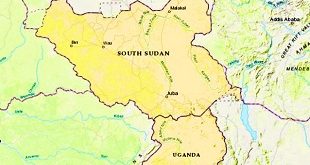
Ugandan citizens die on roads between 6pm and 8pm more than any other time
Kampala, Uganda | THE INDEPENDENT | Sonia Kyoshaba was an active university student of Hotel Management who took a boda boda intending to reach her hostel in time to beat an assignment deadline, when a reckless driver knocked her and she lost consciousness. When she woke up in hospital, she had lost her limb up to the hip and could no longer defecate, condemned to a lifetime use of special bags connected to her intestine that cost her 10,000 everyday.
Yet Kyoshaba is among the luckier 1,000 victims who get permanently injured every year during the deadliest time on the country’s roads from 6.00pm to 8pm. Another 750 victims of the six to eight killer stretch are killed on the roads.
You are thus more likely to die on Ugandan roads between 6pm and 8pm than at any other time, according to traffic and road safety statistics for the past three years. This number could be even more since some crash victims die some time later outside hospital and their cause of death not recorded accurately.
At least a fifth of the road crash victims are killed in those two hours. For instance 3,689 people died in road crashes in 2018 but 781 died between 6pm and 8pm which was 21 percent of the death toll
In 2019, 3,880 people but 790 died between 6pm and 8pm. The situation was not any better in 2020 as 3,663 lost their lives on the road with 805 died between 6pm and 8pm which was a 22 percent contribution to the massacre.
When Sonia Kyoshaba, a Kyamboga University student lost the whole of her right limb last year, the cause was speeding by an oncoming car which was overtaking recklessly. Kyoshaba was crashed in Kisaasi, Nakawa division of Kampala.
“I saw two vehicles coming from the opposite direction and the second one overtook. That is the last thing I saw and it knocked us down,” recalls the young lady, who is still in terrible pain. “I was taken to Mulago hospital where I was amputated and I lost the whole right limb from the pelvis. I had wanted to go finish my coursework which I was supposed to hand in the next day. I was pursuing a Bachelor’s degree in Hotel Management and Institutional Catering.”
Jimmy Sserunkuma, a teacher attributes the high numbers of evening crashes to absence of traffic officers on roads. Sserunkuma says he rarely finds traffic officers on roads between 7pm and 9pm.
“I often drive in the evening hours but I don’t see traffic officers on road even at busy road junctions. For example, I come from Goma Division of Mukono municipality, but you find no police officers at junctions like Kyaliwajjala, Namugongo or Kira. These junctions are always very busy up to around 10pm,” Sserunkuma said.
Rogers Kawuma Nsereko, the Kampala metropolitan traffic police commander says it would be unfair to blame police officers for the huge numbers of road fatalities between 6pm and 8pm. Nsereko believes there is recklessness of drivers, pedestrians and motorcyclists around that time yet there is a lot of activities as people are driving back home and doing last minute shopping.
“You should know that our traffic officers are also human beings,” Nsereko says. “Once the jam has reduced, it also time for our officers to fall out. Stopping accidents is not majorly ours. You as a driver or pedestrian it is your responsibility to ensure you are not knocked. It would be unfair to blame traffic police for accidents. We cannot be everywhere every time to ensure your safety.”
Nsereko adds that Kampala Metropolitan needs over 1,100 traffic personnel compared to huge numbers of vehicles, motorcycles and pedestrians. But the area only has about 700 meaning there is deficit of more than 400 personnel.
Sam Bambaza, the executive director Hope for Victims of Traffic Accidents-HOVITA, believes the ever increasing road fatalities and injuries are as a result of neglected post-crash investigations.
Bambaza says there is need to have a chain of responsibility where a road crash is probed from the driver, manager of the transport company in cases of buses, to the owners and the regulator.
“What you need to know is that all these crashes are not investigated,” Bambaza says. “The moment you don’t investigate; you are treating something you don’t know. Police tend to focus on the criminality other than investigating to solve the problem so that such kind of crash doesn’t occur.”
Bambaza adds: “We don’t have chain responsibility policy. Chain of responsibility means that not only the driver has the control of transport means and should not be the only one held responsible. The owner might not be servicing the car, not buying spare parts. The regulator should be held responsible. Why would a driver who has crashed one bus be allowed to drive another for example?”
Away from the more than 700 people who die in road crashes between 6pm and 8pm every year, at least 1,000 survive with dreadful injuries. Such injuries leave many people incurring expenses for the rest of their life, like Kyoshaba with her schoolmates spent over 23 million shillings in medical expenses and is currently living with a colostomy on one side of her belly.
*****
URN
 The Independent Uganda: You get the Truth we Pay the Price
The Independent Uganda: You get the Truth we Pay the Price



